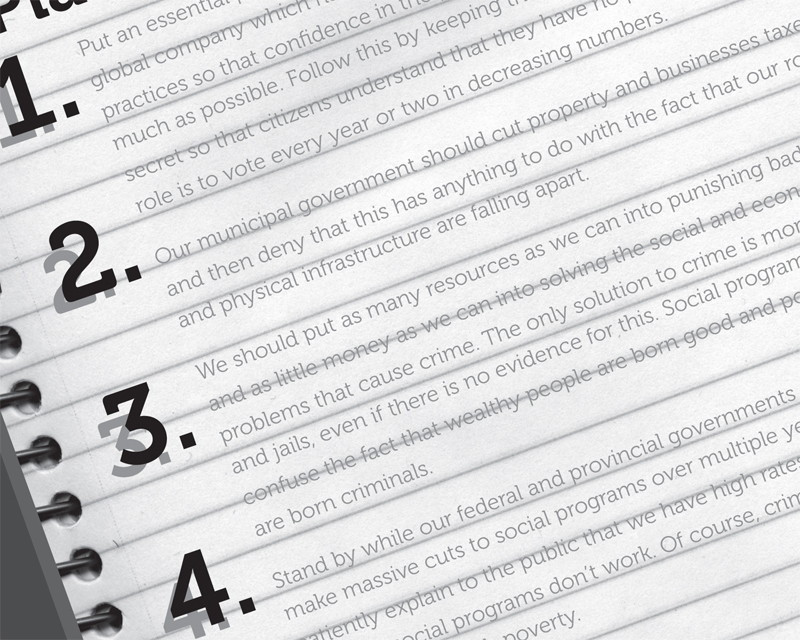Envisioning a city we don’t want
A 10-point plan that looks curiously like the city we currently have
There are many ideas about how to make Winnipeg the city we want. We can probably all agree that we should avoid doing the wrong things.
With this in mind I am going to ask a strange question, and suggest some answers.
The question is: How can we create a Winnipeg that has unhealthy citizens and that will be unsustainable over time?
Here are some of the answers.
1. Put an essential public utility, such as water services, in the hands of a global company which has demonstrated cut-throat profiteering practices so that confidence in the public sector can be eroded as much as possible. Follow this by keeping the terms of the contract secret so that citizens understand that they have no power. Their only role is to vote every year or two in decreasing numbers.
2. Our municipal government should cut property and businesses taxes and then deny that this has anything to do with the fact that our roads and physical infrastructure are falling apart.
3. We should put as many resources as we can into punishing bad guys and as little money as we can into solving the social and economic problems that cause crime. The only solution to crime is more police and jails, even if there is no evidence for this. Social programs only confuse the fact that wealthy people are born good and poor people are born criminals.
4. Stand by while our federal and provincial governments continue to make massive cuts to social programs over multiple years and then patiently explain to the public that we have high rates of poverty because social programs don’t work. Of course, crime and illness has nothing to do with poverty.
“ We must limit citizen access to City Hall as much as possible. If we are not careful, democracy can derail many of our plans
5. We should avoid investing in inner-city housing, community infrastructure and in the people that live in the inner city. Then, we should act as though we are surprised when the inner city is seen as unattractive and dangerous.
Along with this we should support urban sprawl by allowing new residential developments as far from the inner city as possible because people who can afford it want to avoid the inner city. This has the potential to increase travel time and decrease physical activity and family time. It can also help to guarantee an unsustainable city by increasing gasoline usage and air pollution.
6. In addition, it is important to get rid of the city planning office and replace it with a property developer who can ensure developers make a lot of money. City planners will just get in the way.
7. We should try to limit, as much as possible, the availability of public green space. We should have the private sector manage our parks so we can eventually build condos in them. Parks are a very dangerous thing if we are trying to create unhealthy citizens. If we are not careful, even the poorest citizens will exercise and improve their health.
8. We should try to ensure that we have as many low wage earners as possible because low incomes can create a lot of disease. Our provincial government should institute as low a minimum wage as it can get away with, and have no legislation to require benefits. The city should shed unionized jobs and contract out to companies that pay low wages.
9. We should make sure that we create as much conflict as possible. The mayor can begin by distinguishing his friends from his enemies on city council and by cutting his enemies out of as many decisions as possible. This will ensure a lot of resentment. Beyond this, we should pit groups of citizens against each other as often as we can and avoid any win-win solutions.
10. Finally, we must limit citizen access to City Hall as much as possible. If we are not careful, democracy can derail many of our plans.
This practical 10-point plan is guaranteed to encourage an unhealthy citizenry and an unsustainable city.
Does it look familiar?
Sid Frankel is a board member of the Social Planning Council of Winnipeg. Visit their website at www.spcw.mb.ca.
Published in Volume 65, Number 8 of The Uniter (October 21, 2010)







